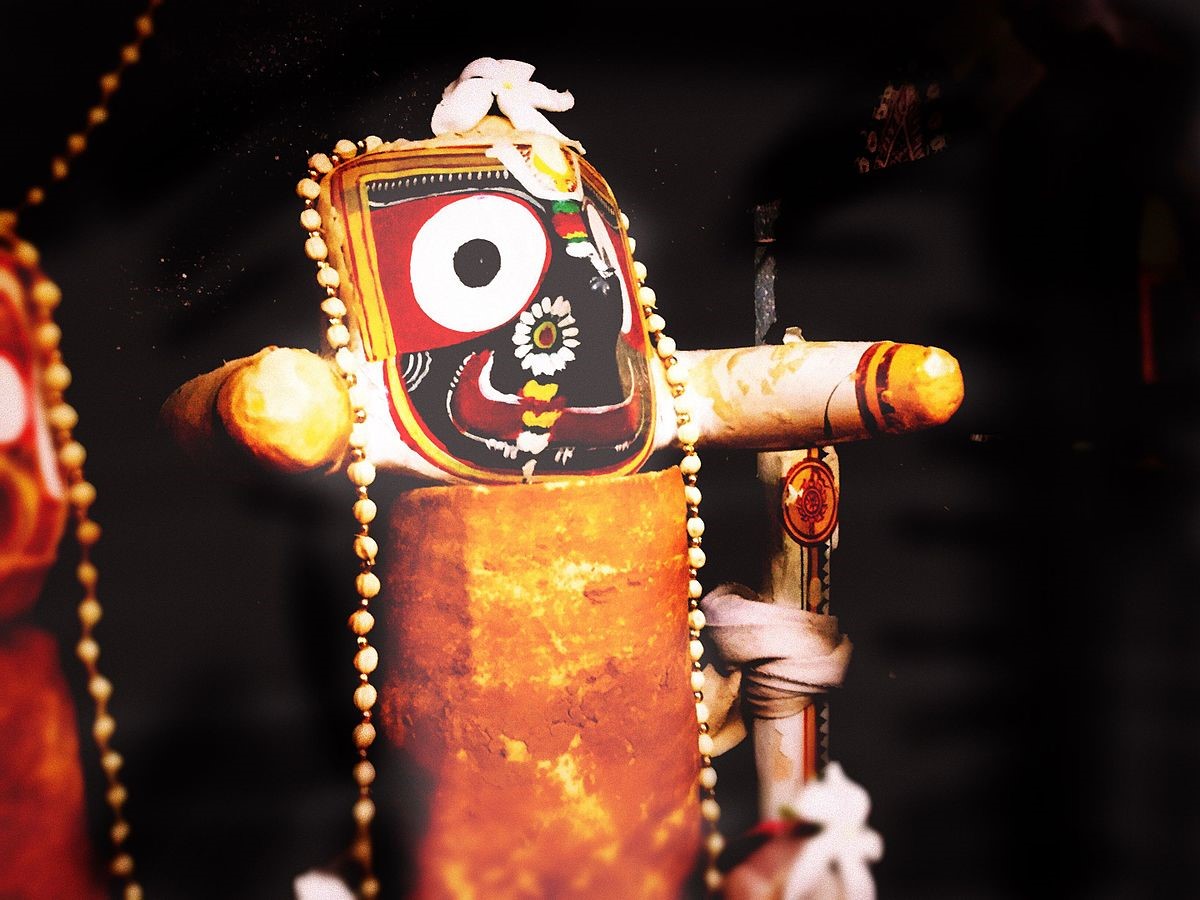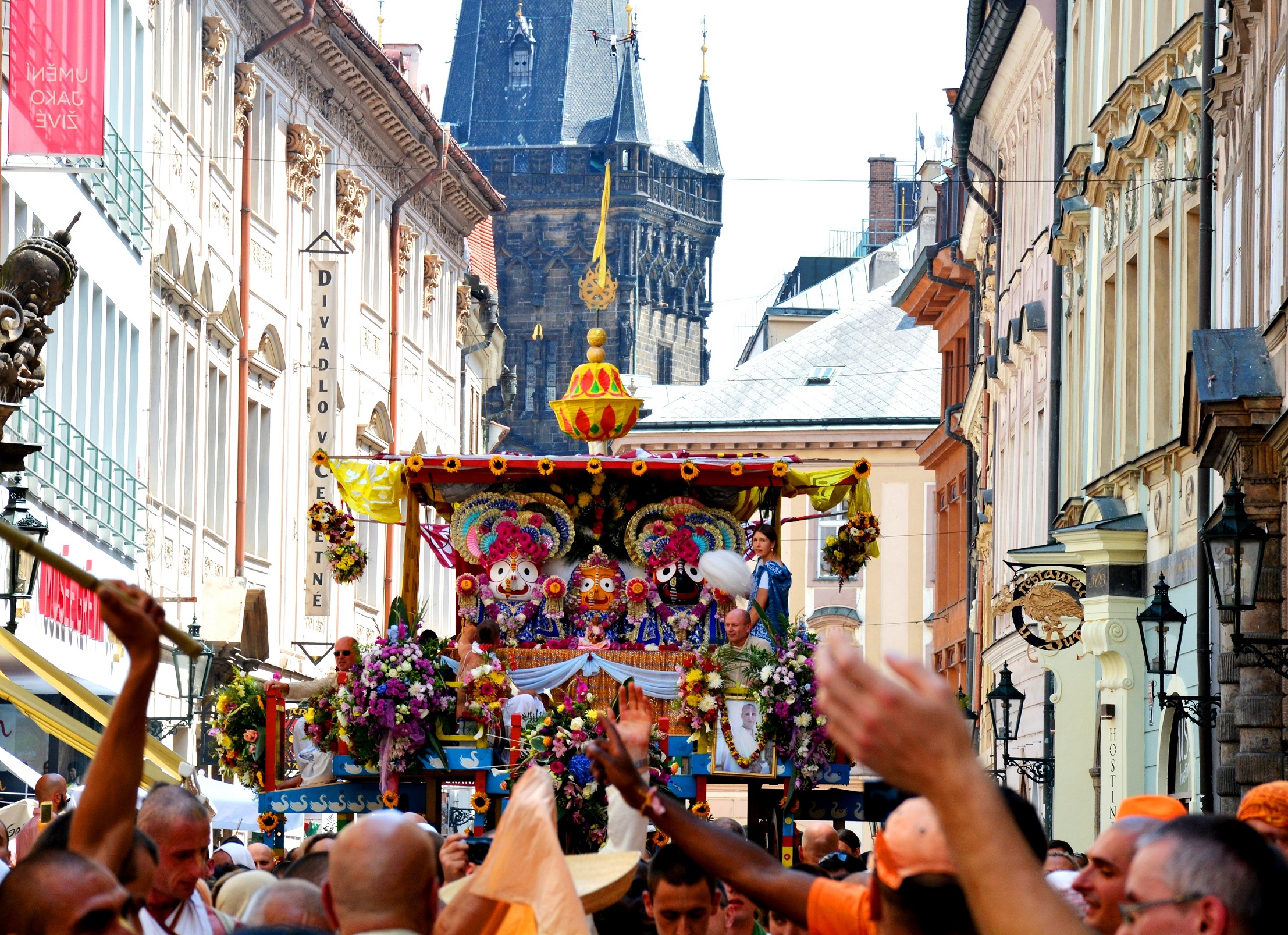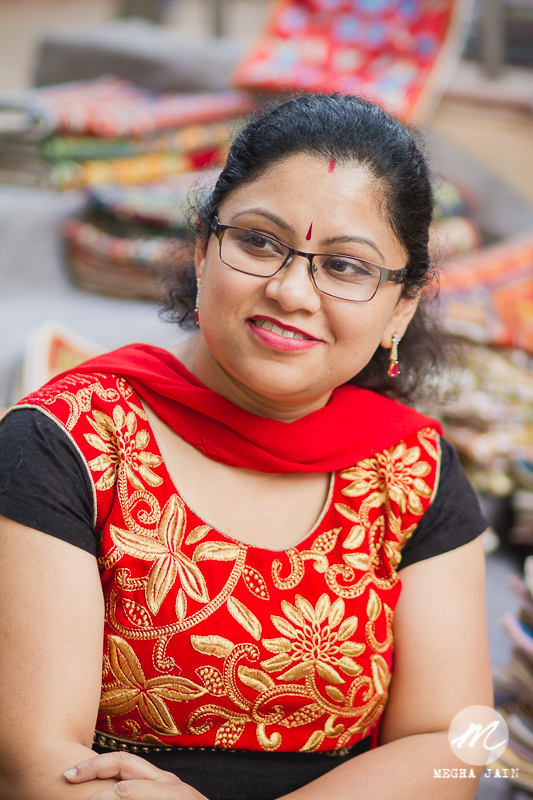
By Prateek Pattanaik – Own work, CC BY-SA 4.0, https://commons.wikimedia.org/w/index.php?curid=50480157
From a distance floats the prayers from Jama Masjid. Here arrives Eid al-Fitr, as ends the last day of the holy month of Ramadan when Muslims all over the world fast, pray and give alms to the poor. Strangely the date also coincides with the auspicious day of Ratha Jatra, when Hindus universally chant, sing and dance with immense devotion towards Shri Jagannatha, the Lord of the universe. While the history is full of hate stories between the two communities be it during the Islamic invasion, partition or the riots; let me throw some light on the beautiful Jagannatha culture where the two religions peacefully coexist even today.
Ratha Jatra or the car festival is one of the oldest Hindu festivals in the world and most magnificently celebrated at Puri, in the eastern state of Odisha. Just as pilgrimage to Kabba is a mandate for every able Muslim at least once in life time; for Hindus it’s the 4 Dhamas as defined by Adi Shankaracharya in four corners of the nation. Puri the eastern Dhama is named the “Sankha Kshetra”, as the geographical shape of Puri resembles a right oriented conch shell or Sankha and hence has special importance in scriptures. One of the biggest and holiest shrines of Lord Vishnu the temple has miraculously survived the onslaught of many invasions and still has a plethora of long-buried secrets that are yet to be solved by science.
It’s notable that the grand doors of the temple are open only to Hindus by birth and the administrative committee of the temple has preserved this right for centuries. The priests have not bowed down before the father of nation Mahatma Gandhi who in year 1934 had tried to enter the premises with few Dalits and lower caste community. In year 1984 Smt Indira Gandhi, then Prime Minister of India was banned to enter the temple as she was considered an outcast for her wedlock outside the religion. So was the luck of Rabindranath Tagore, B. R. Ambedkar, Kabir, Guru Nanak and few other eminent personalities as their entrance to the temple was prohibited due to different reasons.
The age-old system run by the priests or “Pandas” discriminates between upper and lower caste people or even between Hindus and non-Hindus, the creator of the universe doesn’t. Every year on the Ashadh Shukla Dwitiya, i.e. during the beginning of rain season with his elder brother Balabhadra and sister Debi Subhadra, Lord Jagannatha himself comes out of his premises and travel to his maternal Aunt Gundicha Debi’s temple so that people of lower castes as well as from other beliefs can have a view of him. Three giant wooden chariots are freshly constructed every year, the king of Puri Gajapati himself cleans the chariot with a broom made up of gold, the ropes tied to the chariot are pulled by thousands of devotees, lakhs of pilgrims from various different countries attend the event and crores from over the globe watch the show over national and international television.
The wheels of the chariot as eye-witnesses have narrated rotate neither with vigor nor valor but only with sheer love and devotion. History as well as folktales refers to many times when the massive unstoppable chariot abruptly ceased to move even an inch when an ardent follower of the Lord has been wronged or is in need. One such reference goes back to the 17th century to Lord Jagannatha’s dearest follower Salabega, a warrior poet of that era. Salabega’s mother was a Hindu Brahmin widow abducted by a Muslim solder in the Mughal army and thus he was born. Following his father he too was brought up as a Muslim and later joined the Mughal army. Severely wounded in a war Salabega was in his death bed as no Baidya of that time could cure him. In those crucial hours on his mother’s instigation he worshipped Lord Jagannatha and had a miraculous healing in due course of time. Salabega eventually became a great devotee of the Lord and started composing Bhajanas or devotional poems that reached the common man and was widely appraised.
Salabega the greatest devotee of Jagannatha was not spared of the stern regulation of the temple authorities. Being born to a Muslim father, the priests didn’t allow his entry to the holy shrine in his lifetime. Hence Salabega decided to visit Puri during the car festival to get a glimpse of the beloved Lord as that’s the only time when Jagannatha goes universal beyond caste, creed and religion. However on his way he became severely ill and could not arrive at the spot on time. Miserable and helpless Salabega prayed his beloved deity to wait for few moments till he could reach him. The chariot stopped just at the spot where Salabega was praying and started moving only after he had a content view of the Lord. More than three centuries have passed since Salabega, still during the car festival Jagannatha’s chariot stops for few moments in front of the tomb of his beloved devotee Salabega on “Bada Danda” or the grand road of Puri. Salabega’s written Bhajanas are extremely popular in Odisha and especially “Ahe nila saila prabala martya barana” is widely used as a morning prayer in schools within the state.
The devotion of people of other religions towards Shri Jagannatha did not end with Salabega. One of the followers of Jagannatha culture in the twenty first century is Sk Makbul Islam. Born in a Sufi-Islam family Makbul has been researching on history of Jagannatha since 1993 and authored many books on related folktales. He has also received a felicitation by Puri Shankaracharya and Gajapati Dibya Singh Deb for his outstanding contributions to the spreading of Jagannatha culture in nation and beyond.
The grand temple of Puri was constructed in 12th century; yet since when Jagannatha cult began no one knows. It’s said that being named as “Neela Madhava” the Lord has been worshipped by the local tribal people since the pre-Aryan era. Today the century’s old Odia festival Ratha Jatra has become a universal fiesta, thanks to the International Society for Krishna Consciousness (ISKCON) for organizing this in 108 cities all over the world including countries like U.S.A., Canada, England, Ireland, France, Netherlands, Germany, Italy, Australia, Russia and more.

By David Sedlecký – Own work, CC BY-SA 4.0, https://commons.wikimedia.org/w/index.php?curid=41718679
In his poems Salabega describes Lord Jagannatha as “Eka to bhakata jeebana” i.e. Lord for whom his followers are as dear as one’s kith and kin. Ever the kindest of the kind Lord Jagannatha as scriptures say goes to any extent to fulfill desire of his followers. Saints have emphasized that for the Lord it’s the devotion that counts and nothing else. A flower, a leaf or just water whatever a devotee offers with love he accepts. Perhaps that’s too the liberal values of Hinduism; a belief that does not support conversion or invasion; only peaceful co-existence.
“Jagannatha Swami Nayana Patha Gami BhabaTu me”. May Lord Jagannatha eternally be the object of my vision. Special thanks to Shri. Sanjib Mohanty, Senior lawyer Supreme Court, India & V.P. Odisha Forum and Bhubaneswar Buzz for providing materials for the article.
Contributed by Debajani Mohanty, Awarded Author & Activist by Nobel laureate Shri Kailash Satyarthi, Senior I.T. Professional with NIIT Technologies Ltd.
http://www.debajanimohanty.com
https://www.facebook.com/debajani.rastogi

